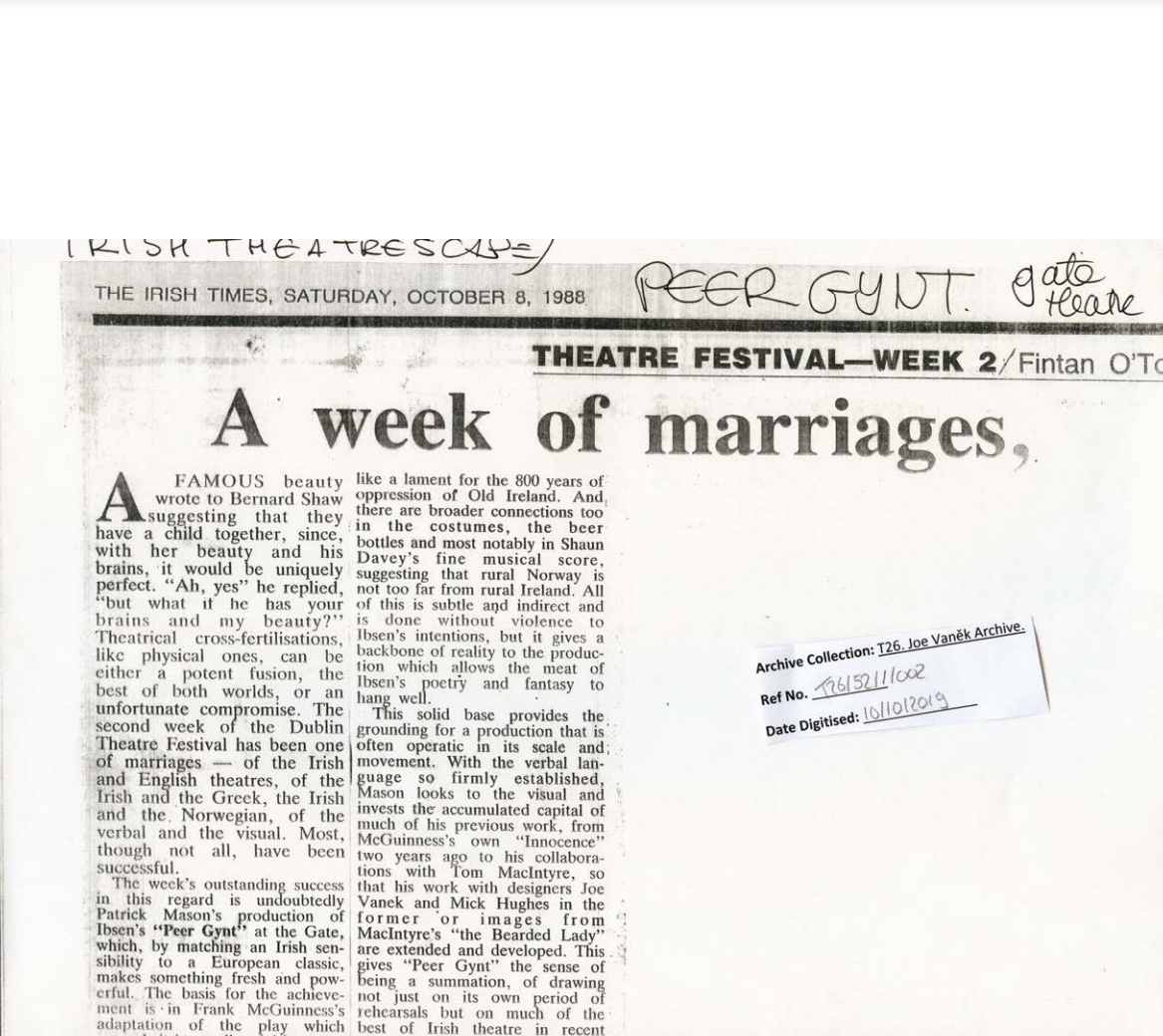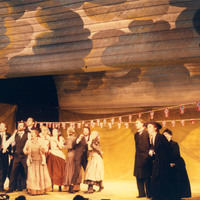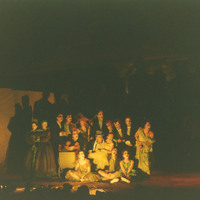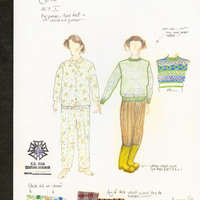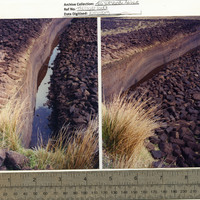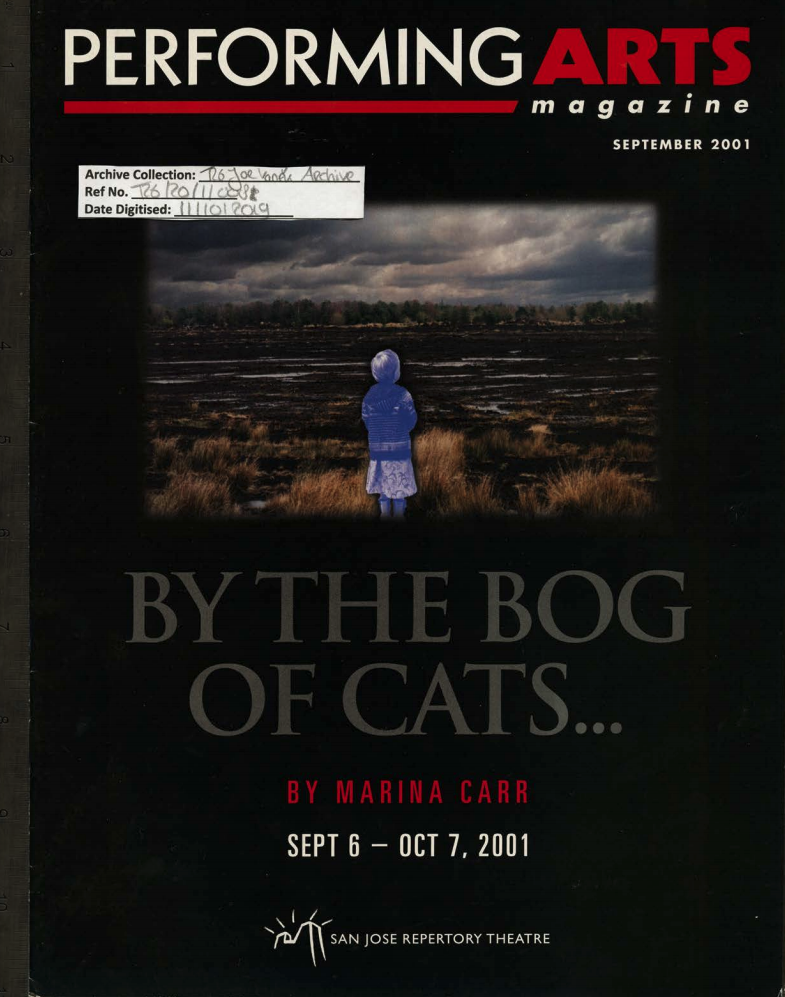Myths, Legends and Tales
In 1987, Druid Theatre Company produced Yeats’ version of King Oedipus with Marie Mullen as its eponymous hero. Yeats adapted his script from Sir Richard Jebb’s translation, but made some significant changes: most noteworthy, he diverged from Jebb’s “half Latin, half Victorian dignity” and opted for more straightforward language that would fit in an Irish context. The play was also significantly shortened, resulting into a less self-pitying Oedipus. According to Brian Arkins, the play, under Frank Conway’s direction, evokes the “overwhelming emotion, a sense of the actual presence in a terrible sacrament of the god” which he had never experienced so strongly when watching Greek drama. The archive contains a small selection of photographs of the dramatic costumes and set that Vaněk designed for this performance. The costumes and make-up heighten the play’s symbolism and mystic atmosphere.
Patrick Mason and Vaněk collaborated again in 1988 and staged Peer Gynt at the Gate Theatre. McGuinness’ translation and adaptation of Ibsen’s Peer Gynt is a hybrid of the European classic and Irish storytelling. The play follows the eponymous hero, Peer Gynt, on his journey from the Norwegian mountains to The North African desert, and back again. The story weaves together romanticism and early signs of modernist fragmentation, as well as realism and surrealism. McGuinness breaks with the more traditional, fairy tale-like framework of the play and adds an Irish sensibility in which one-eyed trolls become Irish nationalists and everyone speaks with a clear Irish inflection. Vaněk carries this Irishness over in his costume design. The archive contains a selection of photographs that showcases several of the 100 costumes that Vaněk designed for this production as well as the scenery for the different landscape that Peer encountered on his journey.
Marina Carr’s By the Bog of Cats is the only production in this collection that was not produced by an Irish company but by the San Jose Repertory Company. This is especially interesting, because the play is so grounded in Irish folklore and, in particular, that of the Irish travellers. The story centres on Hester (Holly Hunter), a “tinker”, who lives with her daughter in a caravan on the bog. Carthage, (Gordon MacDonald) the father of her child, demands that she leaves the bog, because he has promised the land to his new bride, Caroline (Gretchen Cleevely). Meanwhile, Hester is visited by several mystical figures including Catwoman (Joan MacIntosh), Ghost Fancier (James Carpenter), and a spirit. The play is loosely based on the Medea myth. The archive contains an expansive selection of Vaněk’s research notes on the set design for Timothy Near’s 2001 production, and how to create its mystic atmosphere. It also has photographs and sketches of the bog, caravans, and Irish travellers, as well as all the costume designs and their corresponding research notes.
Tom McIntyre’s What Happened Bridgie Cleary is based on the true story of the last woman who was burned for witchcraft in Ireland. In 1895, the Tipperary farmer Mikey claimed that his wife, Bridgie, had been abducted by fairies and that he had merely burned the changeling they had left in Bridgie’s place. According to rumours, Mikey concluded that Bridgie was a changeling after he suspected her of having an affair. McIntyre’s play has Mikey (Tom Hickey), Bridgie (Catherine Walker) and her lover (Declan Conlon) reunite in the anteroom of heaven where they are confronted with their past and their responsibility in Bridgie’s death. Vaněk’s haunting set heightens this feeling of a place between this world and the next. According to Karen Fricker in the Guardian, it is the cast’s interaction with this otherworldly set that really brings out the productions “strange beauty.” Photographs of the set and the model box are included in the archive.

